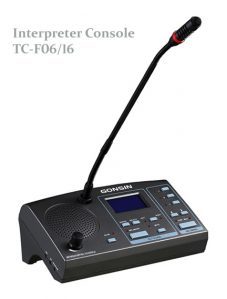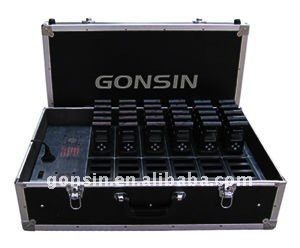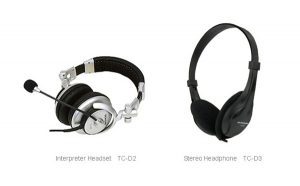With the help of simultaneous interpretation equipment, interpretation is performed in parallel with a speaker’s report, with a delay of few seconds. The speaker does not need to pause so that the interpreter could interpret his/her speech in fragments. Simultaneous interpreters work wearing headphones, sitting in a booth, in which the sound isolation is maintained. As a result, the interpreter’s voice does neither overlap the speaker’s voice, nor hinder the audience from hearing. The audience can hear the interpretation through a special receiver, to which headphones are connected. Simultaneous interpretation is necessary, if more than two working languages are used during an event. In addition, simultaneous interpretation is the indicator of a higher status of an event.
Equipment
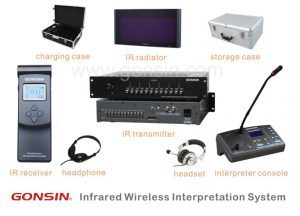
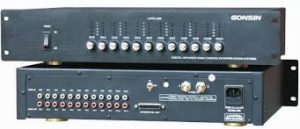
Simultaneous interpretation systems are generally based on the separation of languages into channels. In particular, they enable different participants of the event to hear any given speech in different languages at the same time. Recipients of simultaneous interpretation are equipped with channel selectors; the participants can choose the language acceptable to them and hear all speeches on the same channel.
System Composition:
- Basic control panel;
- Interpreter’s control panel, with a microphone and headphones;
- Interpreter’s booth;
- Infrared converter (radiator);
- Receiver of simultaneous interpretation with earphones in set.
Ordering the equipment:
A client, who faces a task to choose a supplier, provider of simultaneous interpretation equipment, or make a complex decision regarding the simultaneous interpretation equipment, should know:
- Simultaneous interpretation equipment must be professional. There are not too many suppliers of professional equipment for simultaneous interpretation worldwide.
- Simultaneous interpretation equipment always works in combination with voice reproduction devices . Signals enter the system through a mixer. That’s why it is necessary to order voice reproduction and simultaneous interpretation devices from the same supplier.
- Choose simultaneous interpreters based on recommendations, just as you would choose a doctor or lawyer. Highly qualified specialists are unneeded of advertising!
- When ordering simultaneous interpretation equipment, it is best to consult a simultaneous interpreter, provided you have already chosen one; take account of his/her opinion because he/she will have to work with this equipment.
